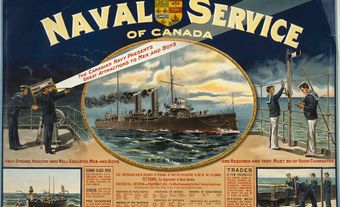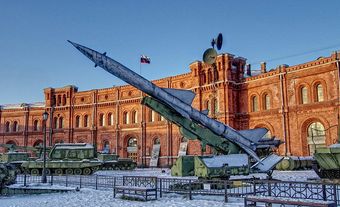The Prestonians were a group of 21 Second World War frigates reactivated by the Royal Canadian Navy (RCN) in the 1950s for antisubmarine warfare (ASW). This was a stopgap measure to meet Canada’s North Atlantic Treaty Organization (NATO) force goals until the purpose-built St Laurent-class destroyer escorts came into service. Although originally built as Anti-Submarine Warfare (ASW) vessels, the Prestonians had to be extensively modified to meet the more complex demands of Cold War ASW, which they performed until withdrawn in the mid-1960s.

Prestonians
When Canada became part of NATO in 1949, it promised to provide anti-submarine escort forces to protect shipping lanes. The RCN needed a long-range escort vessel to monitor and defend against Soviet Cold War submarine activity. This led to the design of the St Laurent class, a purpose-built ASW destroyer escort that entered service in the last half of the 1950s. In the meantime, the Navy reactivated 21 of the Second World War-vintage River-class frigates that had been “mothballed” and placed in reserve for just this purpose.
Seventy River-class frigates had been built in Canada during the Second World War (10 went to the Royal Navy). The 21 vessels taken out of reserve in the early 1950s were selected on the basis of their state of wear and preservation. The first to be recommissioned on 22 August 1953 was HMCS Prestonian, giving the name for the class. The ships were also re-styled as “ocean escorts” to distinguish them from the St Laurent-class “destroyer escorts.”
Modifications
The ships were almost completely rebuilt inside and out. The most obvious external changes were the closing-in of the quarterdeck to a flush-deck configuration to house a pair of Squid antisubmarine mortars, and the enlargement and closing-in of the bridge coupled with a large new operations room; this in turn necessitated a higher funnel and mast.
The forward twin-barrelled 4-inch gun was kept, while the aft gun was removed in favour of the Squids. Internal conversions were devoted primarily to better living conditions (such as cafeteria-style messing and fixed bunks instead of slung hammocks). As the ships also needed more electric power for the new suite of radars, sonars and Squid mortars, they were fitted with two steam and two diesel generators. The steam propulsion machinery was also overhauled, and the hull forward was strengthened for ice protection.
From October to December 1956, HMCS Buckingham was further modified with a temporary landing deck on the stern to carry out some of the first helicopter trials. This proved the concept for the later conversion of the St Laurent-class destroyer escorts to helicopter carriers.

Service
The bulk of the Prestonians were recommissioned between 1953 and 1957 and many were in service by the time HMCS St Laurent was accepted by the RCN in 1955. Although they were not prime ASW platforms, the Prestonians did fill the immediate objective of hulls in the water to counter the Soviet conventional submarine threat while the rest of the destroyer escorts were built.
In 1956, three of the frigates (Prestonian, Penetang and Toronto) were loaned to the Norwegian Navy, which purchased them outright in 1959 to assist in meeting its own NATO force goals.
Many of the Prestonians found additional employment as training ships for junior officers and ratings; this allowed the RCN to “Canadianize” its training away from British establishments. The last of the class to be converted was Victoriaville, which was recommissioned in 1959, only to be converted and re-named in 1966 as the diving tender Granby. It was sold for scrap in 1974, all of the others having been paid off by 1968.


 Share on Facebook
Share on Facebook Share on X
Share on X Share by Email
Share by Email Share on Google Classroom
Share on Google Classroom


